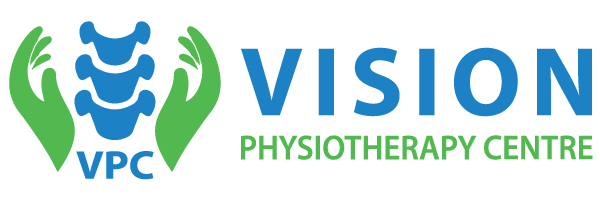What is physiotherapy treatment, Physiotherapy, also known as physical therapy, is a specialized form of treatment that focuses on improving physical health and functionality. It involves the use of various exercises, movements, techniques, and instruments to address a wide range of physical problems and injuries.
Physiotherapists, who are trained professionals in this field, work closely with patients to create personalized treatment plans that aim to reduce pain, enhance mobility, and improve overall well-being.
Whether it’s recovering from an injury, managing a chronic condition, or optimizing physical performance, physiotherapy plays a crucial role in helping individuals regain their strength, flexibility, and quality of life.
What Is Physiotherapy?
What is physiotherapy treatment, Physiotherapy is a type of treatment that helps people with physical problems. It uses exercises and movements to improve strength and flexibility. Physiotherapy can also help reduce pain and improve mobility. It is done by trained professionals called physiotherapists.
They work with patients to create personalized treatment plans. Physiotherapy is often used to treat injuries, such as sprains or fractures, and to help people recover after surgery. It can also be helpful for managing chronic conditions like arthritis or back pain. Overall, physiotherapy aims to improve the quality of life and physical well-being of individuals.
Physiotherapy Treatment List
Physiotherapy treatment encompasses a diverse range of interventions aimed at addressing various physical conditions. One common form of physiotherapy treatment is manual therapy, which involves hands-on techniques to mobilize joints and manipulate soft tissues.
Another essential aspect is therapeutic exercises, which are tailored to improve strength, flexibility, and endurance. Electrotherapy, such as ultrasound or electrical stimulation, is often utilized to relieve pain and promote healing. In addition, heat and cold therapy are employed to reduce inflammation and manage discomfort.
Hydrotherapy, involving exercises in water, can enhance mobility while reducing stress on the joints. Other treatments include PEMF, Shockwave, Cryotherapy, traction, braces, and assistive devices, all of which can aid in supporting the body and facilitating recovery.
Overall, physiotherapy treatment options are designed to address a wide range of physical issues and assist individuals in restoring optimal function and well-being.
Physiotherapy Treatment Methods
Physiotherapy treatment methods encompass a variety of approaches aimed at addressing physical ailments and promoting healing. One common method is exercise therapy, which involves tailored exercises to improve strength, flexibility, and endurance.
Manual therapy, another essential technique, uses hands-on techniques to manipulate muscles and joints, providing pain relief and improving mobility. Electrical stimulation is another method where electric currents are used to stimulate muscles, promote blood flow, and aid in recovery.
Heat and cold therapy, such as hot packs or ice packs, can reduce inflammation and alleviate pain. Additionally, ultrasound therapy utilizes sound waves to target deep tissues, promoting tissue healing and reducing scar tissue.
Traction therapy involves gentle stretching to relieve pressure on the spine or joints. These various physiotherapy treatment methods can be combined and customized to meet the individual needs of patients, facilitating their recovery and improving their overall physical well-being.
Is Physiotherapy Good For Pain?
What is physiotherapy treatment beneficial for you? Physiotherapy can be highly beneficial for managing pain. It offers various techniques and interventions to alleviate pain and improve overall well-being. One common approach used in physiotherapy is manual therapy, where a physiotherapist applies hands-on techniques to manipulate muscles and joints, targeting specific areas of pain.
This can help reduce muscle tension, improve circulation, and promote healing. Additionally, therapeutic exercises prescribed by a physiotherapist can strengthen muscles, enhance flexibility, and provide stability, which can alleviate pain caused by musculoskeletal conditions.
Modalities such as electrical stimulation, heat therapy, and ultrasound may also be utilized to reduce pain and inflammation. Moreover, physiotherapists can educate individuals about proper posture, body mechanics, and ergonomic modifications, which can further prevent pain and improve daily functioning.
Overall, physiotherapy offers a comprehensive approach to pain management, addressing its underlying causes and empowering individuals to lead more active and pain-free lives.

What Are The 7 Roles Of A Physiotherapist?
Physiotherapists perform several important roles in the healthcare field. Here are seven key responsibilities they fulfill:
Assessment: Physiotherapists evaluate patients to identify their specific physical conditions, limitations, and goals. They assess factors such as range of motion, strength, balance, and functional abilities.
Diagnosis: Based on the assessment, physiotherapists diagnose the underlying causes of patients’ physical issues and develop treatment plans accordingly. They may collaborate with other healthcare professionals to ensure comprehensive care.
Treatment Planning: Physiotherapists create personalized treatment plans tailored to each patient’s needs. These plans may involve exercises, manual therapy techniques, modalities, and education on self-management strategies.
Rehabilitation: Physiotherapists help individuals recover from injuries, surgeries, or medical conditions. They guide patients through targeted exercises, provide hands-on therapy, and monitor progress to facilitate optimal recovery and regain functional abilities.
Pain Management: Physiotherapists play a crucial role in managing pain. They utilize various techniques such as manual therapy, electrotherapy, and therapeutic exercises to reduce pain, promote healing, and enhance overall well-being.
Education and Prevention: Physiotherapists educate patients about their conditions, treatment approaches, and strategies to prevent future injuries or relapses. They provide guidance on proper body mechanics, posture, and lifestyle modifications to promote long-term health and well-being.
Health Promotion: Physiotherapists contribute to promoting overall health and fitness. They encourage physical activity, prescribe exercise programs, and provide guidance on maintaining a healthy lifestyle.
By fulfilling these roles, physiotherapists play a vital part in improving patients’ quality of life, promoting physical well-being, and helping individuals reach their optimal functional potential.
Is Physiotherapy A Good Treatment?
What Is The Benefit Of Physiotherapy? Physiotherapy is widely recognized as an effective treatment option. It offers numerous benefits for individuals with physical conditions or injuries. One of its key advantages is the ability to address the root causes of the problem, rather than simply alleviating symptoms.
Physiotherapy focuses on restoring and enhancing physical function, improving strength, flexibility, and mobility. It employs a combination of exercises, manual therapy, and specialized techniques to promote healing, reduce pain, and improve overall well-being.
Physiotherapy also emphasizes patient education and empowers individuals with self-management strategies for long-term health. With its evidence-based approach and personalized treatment plans, physiotherapy has proven to be highly effective in helping patients recover from injuries, manage chronic conditions, and optimize their physical performance.
Overall, physiotherapy stands as a valuable and beneficial treatment option for individuals seeking to improve their physical health and quality of life.
How Does Physiotherapy Treat Pain?
Physiotherapy employs various techniques to treat pain effectively. One common approach is manual therapy, where a physiotherapist uses hands-on techniques to manipulate muscles, joints, and soft tissues. This helps reduce pain, improve range of motion, and enhance tissue healing.
Therapeutic exercises prescribed by a physiotherapist can also play a significant role in pain management. These exercises are designed to strengthen muscles, increase flexibility, and improve overall function, thereby reducing pain caused by musculoskeletal conditions.
Additionally, modalities such as electrical stimulation, heat therapy, and ultrasound may be utilized to alleviate pain and reduce inflammation. Education on proper posture, body mechanics, and ergonomics is another essential aspect of physiotherapy for pain management.
By addressing the underlying causes of pain and providing a comprehensive treatment plan, physiotherapy effectively treats pain and helps individuals regain their comfort and quality of life.
Does Physiotherapy Have Side Effects?
Physiotherapy generally has minimal side effects. However, there are a few considerations to keep in mind. Following a session, patients may experience temporary soreness, muscle fatigue, or mild discomfort as the body adjusts to the therapeutic exercises or manual therapy techniques.
In rare cases, individuals may experience a short-term aggravation of symptoms due to the initial stages of the healing process. It is important to communicate any concerns or changes in symptoms to the physiotherapist for appropriate adjustments to the treatment plan.
Physiotherapy is considered a safe treatment modality, and the benefits of pain reduction, improved mobility, and overall function typically outweigh any potential side effects. Ultimately, the physiotherapist’s expertise and personalized approach ensure that the treatment is tailored to the individual’s needs, minimizing the likelihood of adverse effects.
How Long Does Physiotherapy Treatment Last?
The duration of physiotherapy treatment can vary depending on several factors. The length of treatment is influenced by the nature and severity of the condition being addressed, as well as the individual’s response to therapy.
Some conditions may require only a few sessions over a short period, while others may necessitate ongoing treatment over several weeks or even months. The frequency and duration of each session are determined by the physiotherapist based on the patient’s specific needs and treatment goals.
It is common for physiotherapy to follow a progressive approach, with the treatment plan evolving as the patient’s condition improves. Regular reassessment and adjustments to the treatment plan are made to ensure optimal outcomes.
The ultimate goal of physiotherapy is to help individuals achieve their maximum functional potential and enhance their quality of life.
What Are Some Examples Of Physiotherapy?
Physiotherapy encompasses a wide range of interventions that can address various physical conditions. Some common examples of physiotherapy include manual therapy, which involves hands-on techniques like joint mobilization or soft tissue massage.
Therapeutic exercises are another essential aspect, such as stretching, strengthening, or balance exercises tailored to improve function. Modalities like heat or cold therapy, electrical stimulation, or ultrasound may be used for pain management and tissue healing.
Hydrotherapy, which involves exercises in water, can assist in reducing joint stress and enhancing mobility. Other examples include respiratory physiotherapy to improve breathing and chest clearance, as well as rehabilitation programs for post-surgery or injury recovery. Overall, these examples demonstrate the wide array of physiotherapy techniques available to address specific needs and promote physical well-being.
Conclusion
What is physiotherapy treatment, a valuable and effective treatment option for individuals with physical conditions, injuries, or pain? With its focus on restoring function, reducing pain, and improving overall well-being, physiotherapy offers personalized treatment plans tailored to each patient’s needs.
Through manual therapy, therapeutic exercises, modalities, and patient education, physiotherapists play a crucial role in helping individuals regain their strength, flexibility, and quality of life. Physiotherapy is widely recognized for its ability to address the underlying causes of physical issues and promote long-term health.
Whether it’s recovering from an injury, managing a chronic condition, or optimizing physical performance, physiotherapy serves as a comprehensive approach to improve physical function and enhance overall well-being.
Written by.
Dr. Saiful Islam, PT
BPTh (DU), MPTh (Orthopedics) – NIPS, India
PG Certificate in Acupuncture, India
Specially trained in Ozone Therapy, USA and Ozone Forum, India.
Physiotherapy Consultant, Vision Physiotherapy Center.
To consult: 01760-636324 , 01932-797229 (9:00 AM to 9:00 PM) and make an appointment.
Our Facebook page: Vision Physiotherapy Center





